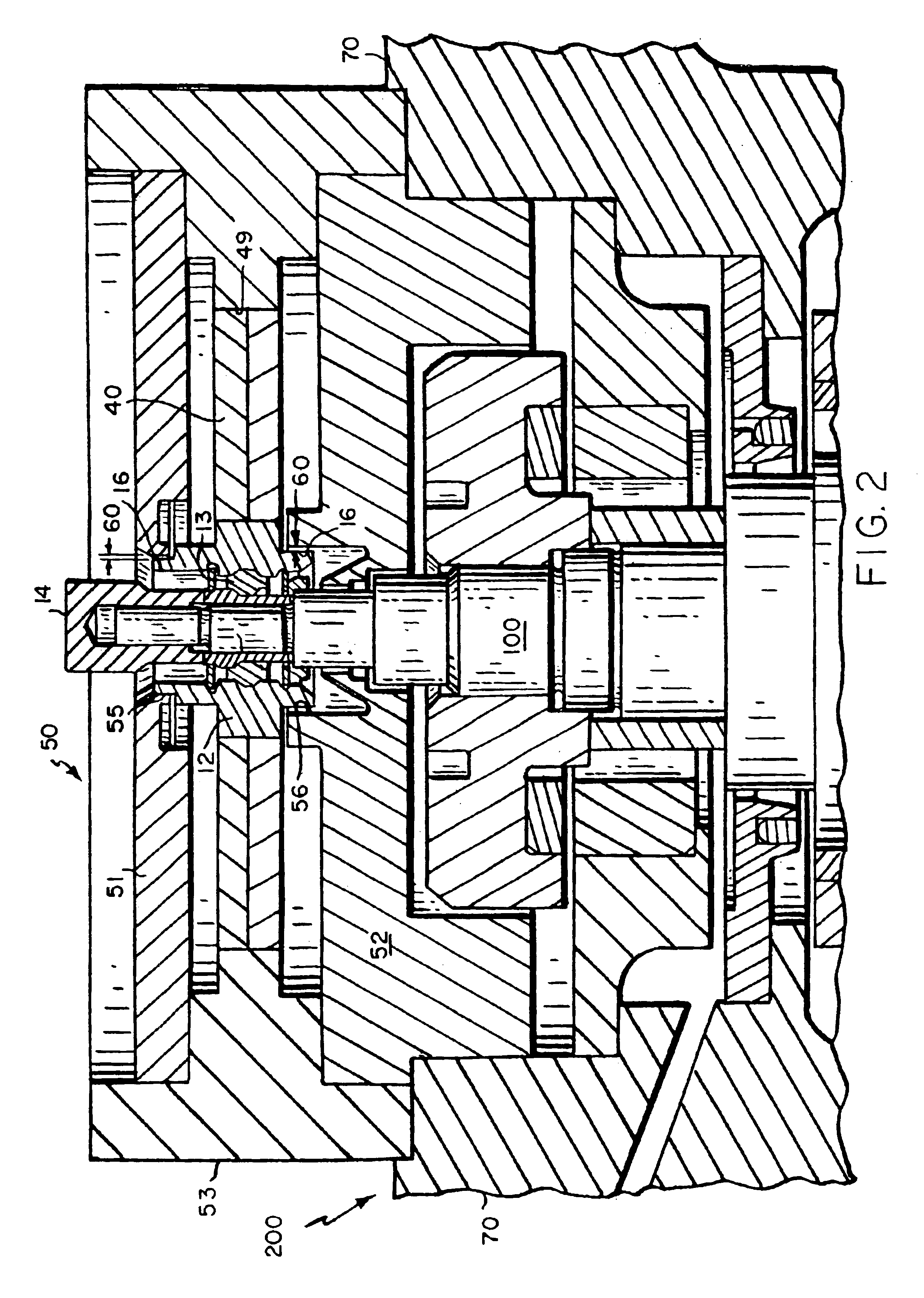Dual stiffness bearing damping system
a damping system and bearing technology, applied in the direction of elastic bearings, bearings, rigid support of bearing units, etc., can solve the problems of affecting the lift, and reducing the lift effect of dampers
- Summary
- Abstract
- Description
- Claims
- Application Information
AI Technical Summary
Benefits of technology
Problems solved by technology
Method used
Image
Examples
Embodiment Construction
As previously stated, flywheel-based, evacuated energy storage devices ("flywheel assemblies") are relatively simple devices for readily storing and recovering energy. Conceptually, the rotor of the flywheel is rotated and mechanical kinetic energy is stored, e.g., primarily in the outermost portion, or rim, of the flywheel assembly. The amount of energy stored in the rim of a flywheel assembly is directly proportional to its mass and to the square of the rotational velocity of the flywheel. Consequently, to those skilled in the art, it is practical to develop flywheels that rotate at ever-increasing velocities.
Because state-of-the-art flywheel assemblies are designed to operate at increasingly higher velocities, designers must be concerned with transitioning the flywheel assembly through its critical velocity during power up. Indeed, during this transition, the flywheel assembly is subjected to deleterious resonance as the operating speed transitions to and then past the critical v...
PUM
 Login to View More
Login to View More Abstract
Description
Claims
Application Information
 Login to View More
Login to View More - R&D
- Intellectual Property
- Life Sciences
- Materials
- Tech Scout
- Unparalleled Data Quality
- Higher Quality Content
- 60% Fewer Hallucinations
Browse by: Latest US Patents, China's latest patents, Technical Efficacy Thesaurus, Application Domain, Technology Topic, Popular Technical Reports.
© 2025 PatSnap. All rights reserved.Legal|Privacy policy|Modern Slavery Act Transparency Statement|Sitemap|About US| Contact US: help@patsnap.com



